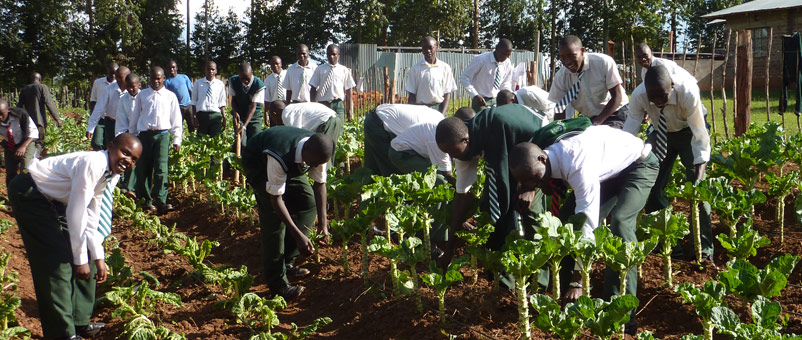The low soil quality combined with the limited soil moisture conditions of the harsh Sahelian climate leads to a low efficiency of fertilizers. Conversely, the beneficial effect of soil & water conservation (SWC) measures such as stone bunds is limited under continuous non-fertilized cereal cropping. In addition, the lack of economic motivation has been one major constraint to increased use of plant nutrient sources in the sub-region.
Laying stone bunds in fields is a well known technique to check runoff and to control erosion and is the most widely practiced technique by farmers in sub-Saharan West Africa. As a result, various government and non-government programmes are promoting the large-scale introduction of the technique and providing technical and logistical backup for collecting and transporting stones.
Contour stone bunds are built with quarry rock or stones along the natural contour of the land to a height of 20-30 cm from the ground and spaced 20 to 50 m apart depending on the inclination of the terrain.
The stone bunds form a barrier that slows down water runoff, allowing rainwater to seep into the soil and spread more evenly over the land. This slowing down of water runoff helps with building-up a layer of fine soil and manure particles, rich in nutrients.
From the perspective of climate change adaptation, contour stone bunds protect the land from heavy rain in years with high rainfall. In drought years, they improve rainwater harvesting, retention and infiltration into the soil, increasing the amount of water available to plants and guaranteeing the harvest. If a good vegetation cover is developed on the stone bunds, they also lower soil temperature, provide protection against wind erosion and help to conserve biodiversity. However, interactions of SWC measures with fertilization optimizes water and nutrient use efficiency, boosting crop production and inducing economic benefits for poor resource farmers
Objectives:
- A minimum amount of labour on upkeep is required
- Stone bunds need to be usually implemented by the community, with development projects supporting the technical, material and logistics aspects.
- Economic success requires optimal spacing of stone bunds based on the type of construction, materials transport cost, and how labour is organized.
- Soil and water conservation
- Increase local resilience to climate change
Results:
- Under water limiting conditions, the stone bunds are efficient measures to improving soil water content through runoff control, which can reach 59% in plots with barriers alone, and even 84% in plots with barriers + organic matter.
- When rainfall is erratic, the stone bunds contribute to conserving more moisture in the soil for longer, which helps to alleviate water stress during dry spells.
- Crops in plots with stones bunds could yield two to three times more than crops in control plots. The increase in sorghum yields varies between 33% and 55% in Burkina Faso’s Central Plateau area while grain yields increase by more than 40% for millet up to 15 years after the bunds were established in Niger
Find out more here: http://www.ifad.org/operations/projects/regions/pa/infosheet/sahel.pdf


